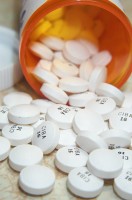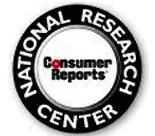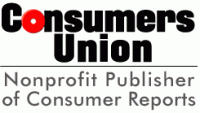Parents say drug therapy and switching schools among most helpful treatments for children with ADHD, survey suggests parents not bothered by ADHD label
 Yonkers, NY — Sixty-seven percent of parents asked to rate the most effective treatments for ADHD identified drug therapy as most helpful, followed by 45 percent who said switching to a school better suited to help with ADHD helped a lot. The analysis of treatments for ADHD, based on a Consumer Reports Health survey of more than 900 parents of children with ADHD, comes as parents are starting to plan for the new school year.
Yonkers, NY — Sixty-seven percent of parents asked to rate the most effective treatments for ADHD identified drug therapy as most helpful, followed by 45 percent who said switching to a school better suited to help with ADHD helped a lot. The analysis of treatments for ADHD, based on a Consumer Reports Health survey of more than 900 parents of children with ADHD, comes as parents are starting to plan for the new school year.
The report, available at Consumer Reports Health, provides detailed guidance on two classes of drugs to treat ADHD (stimulants and non-stimulants). In a related blog, Consumer Reports’ medical adviser, Dr. Orly Avitzur, discusses how the ADHD label has evolved, as evidenced by the small fraction of parents—only 22 percent—who said it was problematic having a child labeled as having ADHD. “The result is that students and surprisingly professionals in several fields, including medicine, are seeking out an ADHD diagnosis in order to excel through the use of drugs or accommodations, such as more time to take tests,” said Dr. Avitzur. Eight percent of parents whose kids had received a diagnosis told Consumer Reports Health that getting accommodations for standardized tests, like the S.A.T., was a reason for seeking an ADHD diagnosis.
Treatments That Help the Most: A Closer Look at ADHD Drugs

Consumer Reports Health found that most families with children with ADHD turn to medication—a full 84 percent put them to use at some point— with more than half of the kids in the survey trying two or more medications in the past three years. The average age of children who tried ADHD drugs was 13 years. Fortunately, many children with ADHD, including those who are not treated, improve as they progress into their teenage years and into their 20s.
According to parents surveyed by Consumer Reports Health, children who tried medications had slightly better outcomes than those not trying medications. Medication helped the most with academic performance and behavior at school. Medication was less helpful with behavior at home, social relationships, and self esteem. And while medication was cited as the strategy most helpful in managing ADHD, only 52 percent of parents agreed strongly that if they had to do it over again, they would have their kids take medications and 44 percent wished there was another way to help their child.
 Consumer Reports Best Buy Drugs, a public education project that rates prescription drugs for more than 20 common conditions based on safety, efficacy, and cost, identifies the two main classes of medications that are available for ADHD. Stimulant medications, which include amphetamine and methylphenidate-based medications, are generally considered the first line of medical treatment for a typical child with ADHD. Children who do not respond well to stimulants, and those with co-occuring conditions such as tics or anxiety, are candidates for nonstimulant medications such as atomoxetine (Strattera) or guanfacine (Intuniv). Consumer Reports’ BBD analysis is available online at www.ConsumerReportsHealth.org (click on prescription drugs).
Consumer Reports Best Buy Drugs, a public education project that rates prescription drugs for more than 20 common conditions based on safety, efficacy, and cost, identifies the two main classes of medications that are available for ADHD. Stimulant medications, which include amphetamine and methylphenidate-based medications, are generally considered the first line of medical treatment for a typical child with ADHD. Children who do not respond well to stimulants, and those with co-occuring conditions such as tics or anxiety, are candidates for nonstimulant medications such as atomoxetine (Strattera) or guanfacine (Intuniv). Consumer Reports’ BBD analysis is available online at www.ConsumerReportsHealth.org (click on prescription drugs).
While medications can help children concentrate, feel calmer, and think before acting, ADHD medication side effects are considerable in number and frequency. The most prevalent side effects, in descending order, include decreased appetite, sleep problems, weight loss, upset stomach, and irritability. Consumer Reports Health outlines several strategies for managing these side effects.
Of all the treatments, thirty-five percent of parents said medication helped the most when it comes to academic performance and behavior at school. Medication helped well with behavior at home (was very helpful for 26 percent) and fairly well with social relationships (very helpful for 19 percent) and self esteem (very helpful for 18 percent).
It Takes a Team

Parents told Consumer Reports Health that nondrug strategies (such as changing the child’s school) also worked very well. Leading strategies for handling ADHD include:
- Switching to a school better suited to help with ADHD helped 45 percent
- Giving one instruction at a time helped 39 percent
- Having a private tutor or learning specialist work with the child helped 37 percent
- Providing structure by maintaining a schedule of activities helped 35 percent
Most children (58 percent) had seen two or more treatment providers in the last 12 months. Given that each provider may have strengths in different areas, visiting more than one practitioner may help some families achieve better results. The parent’s role as coordinator of care is critical. Consumer Reports Health suggests these steps for coordinating care:
- Obtain copies of any medical, psychological, and testing records related to your child’s ADHD condition. The more information you can provide to new treatment providers, the better.
- When enlisting a new professional to help your child, request a baseline measure of your child’s behavior and functioning. This is an important step for three reasons: It provides an objective indication of a child’s diagnosis that parents can bring to schools or other places as proof of diagnosis; it helps professionals know that tests have been previously administered and may save time and money; and it allows parents and treatment providers to monitor a child’s progress from the beginning of treatment.
- Keep a list of all treatment providers who have worked with your child
- Maintain a list of all the strategies you’ve tried and the changes you detected as a result.
- Explore an ADHD treatment center (where different types of providers work together at the same location) if you are unable to take on the role of coordinator of your child’s treatment.
Survey Methodology
 The Consumer Reports National Research Center conducted an on-line survey in July- August, 2009, of 934 parents of children (under the age of 18) with a diagnosis of ADHD. This sample was drawn from a nationally representative household panel. Treatment findings draw from the 785 cases that reported visiting a professional for treatment of ADHD within the past 12 months, and the 676 that reported trying medication within the past 3 years.
The Consumer Reports National Research Center conducted an on-line survey in July- August, 2009, of 934 parents of children (under the age of 18) with a diagnosis of ADHD. This sample was drawn from a nationally representative household panel. Treatment findings draw from the 785 cases that reported visiting a professional for treatment of ADHD within the past 12 months, and the 676 that reported trying medication within the past 3 years.
About Consumer Reports
 Consumer Reports® is published by Consumers Union, an expert, independent nonprofit organization whose mission is to work for a fair, just, and safe marketplace for all consumers and to empower consumers to protect themselves. We accept no advertising and pay for all the products we test. We are not beholden to any commercial interest. Our income is derived from the sale of Consumer Reports,® ConsumerReports.org® and our other publications and information products, services, fees, and noncommercial contributions and grants. Our Ratings and reports are intended solely for the use of our readers. Neither the Ratings nor the reports may be used in advertising or for any other commercial purpose without our permission. Consumers Union will take all steps open to it to prevent commercial use of its materials, its name, or the name of Consumer Reports.®
Consumer Reports® is published by Consumers Union, an expert, independent nonprofit organization whose mission is to work for a fair, just, and safe marketplace for all consumers and to empower consumers to protect themselves. We accept no advertising and pay for all the products we test. We are not beholden to any commercial interest. Our income is derived from the sale of Consumer Reports,® ConsumerReports.org® and our other publications and information products, services, fees, and noncommercial contributions and grants. Our Ratings and reports are intended solely for the use of our readers. Neither the Ratings nor the reports may be used in advertising or for any other commercial purpose without our permission. Consumers Union will take all steps open to it to prevent commercial use of its materials, its name, or the name of Consumer Reports.®


